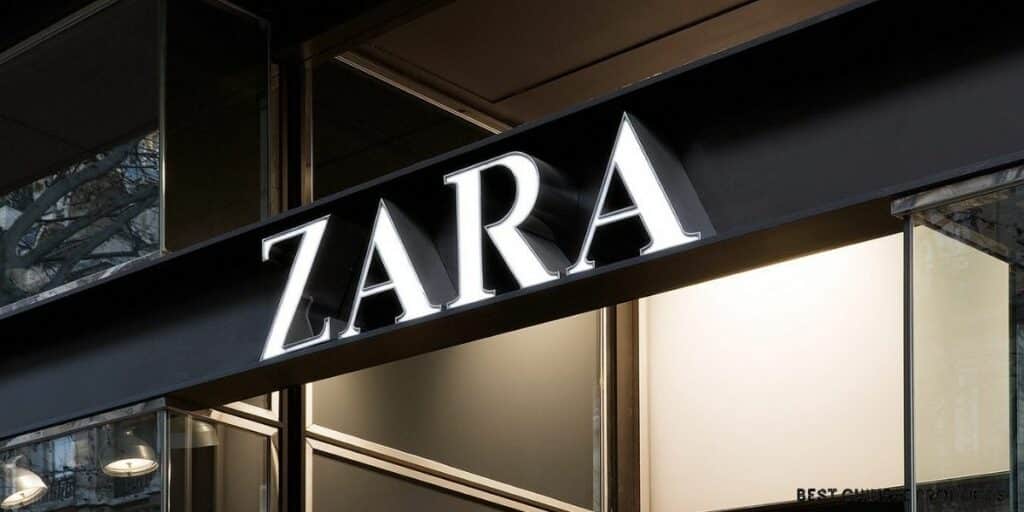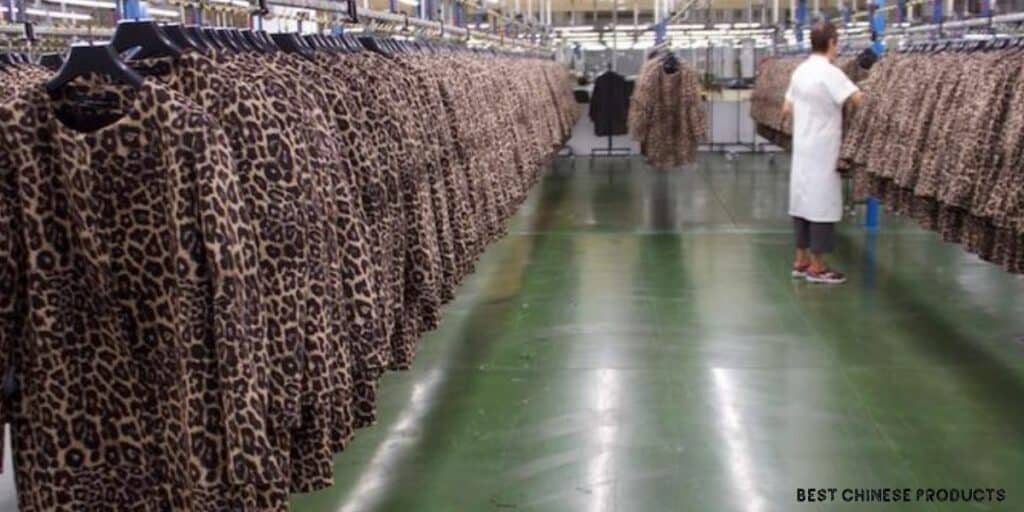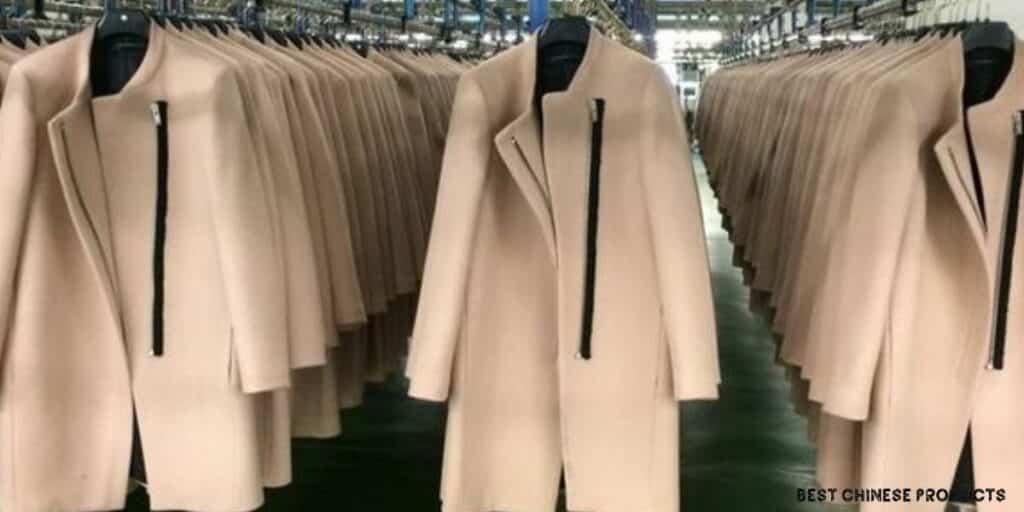Have you ever walked into a Zara and been impressed by the trendy styles at affordable prices? But also wondered where this fashion giant originated?
Buckle up, because Zara actually hails from a country far outside of Asia and it’s not a Chinese brand.
This article will debunk the myth of Zara being Chinese and take you on a journey of how it successfully navigated its way into the vast Chinese market.
We’ll take a close look at the year Zara first set foot in China, the strategies it used to capture the hearts (and wallets) of Chinese consumers, and the competition it faced in this dynamic fashion landscape.
Also Check out: Are Old Navy Clothes Made in China?
Is Zara A Chinese Brand?
What is the History of Zara?

Zara, the renowned Spanish fashion retailer, traces its origins back to its founding in the early 1970s by Amancio Ortega Gaona.
The first Zara store opened its doors in 1975 in La Coruña, Spain, initially under the name “Zorba.” However, a nearby bar shared the same name, prompting a swift change to “Zara.”
From its inception, Zara stood out with its distinctive “fast fashion” approach, swiftly responding to emerging trends and consumer demands.
This innovative strategy, coupled with vertical integration allowing control over production, set the stage for Zara’s global expansion.
In the late 1980s and early 1990s, Zara embarked on international endeavors, opening stores in various countries and captivating a global audience.
The brand’s unique blend of quick design, in-house production, and affordable yet stylish offerings resonated with fashion-conscious consumers.
Zara’s journey took a pivotal turn in 1985 when it became part of the Inditex Group, contributing to the group’s stature as a prominent fashion conglomerate.
Throughout its history, Zara’s emphasis on technology-driven operational efficiencies and a deep understanding of customer preferences underscored its sustained success.
By marrying speed, innovation, and accessibility, Zara positioned itself as a trailblazer in the fashion industry, continuing to set trends and redefine the retail landscape.
Today, the legacy of Zara reflects how a pioneering spirit, commitment to quality, and anticipation of market shifts can establish a brand as a global powerhouse.
How Did Zara Expand into China?

Zara’s expansion into China is a testament to its adeptness at entering diverse markets and resonating with a vast consumer demographic.
Beginning in the early 2000s, Zara strategically entered China, recognizing the country’s growing economic prowess and burgeoning fashion appetite.
The brand made its mark through flagship stores in key cities like Beijing and Shanghai, tailoring its offerings to local preferences while retaining its global identity.
Zara’s renowned “fast fashion” approach found a receptive audience in China, where rapid trend shifts were embraced. Innovative store concepts, integration of technology, and an online presence further solidified its foothold in the market.
Zara’s expansion journey illustrates its ability to adapt, capture local nuances, and leverage its strengths to thrive in a dynamic and evolving landscape.
Is Zara a Popular Brand in China?

Zara is popular in China due to its trendy designs, affordable prices, and fast fashion approach. The brand has adapted to local preferences and offers innovative store concepts.
Zara’s success is attributed to its ability to resonate with China’s growing middle class, urbanization, and exposure to global fashion trends.
While facing competition, Zara’s balance between global standardization and localized offerings has maintained its popularity among fashion-conscious Chinese consumers.
What are the Unique Features and Strategies That Make Zara Stand Out?

The Zara brand stands out in the fashion industry due to its distinctive features and innovative strategies that have contributed to its success. Here are some unique aspects of the Zara brand:
- Fast Fashion Model: Zara revolutionized the fashion industry with its fast fashion approach. Unlike traditional retailers that release seasonal collections, Zara constantly introduces new styles and products throughout the year.
This model allows Zara to respond quickly to emerging trends and customer preferences, keeping its offerings fresh and exciting.
- Vertical Integration: Zara’s vertical integration sets it apart. The brand controls much of its supply chain, from design and production to distribution.
This tight control enables Zara to rapidly produce and deliver new designs to stores within weeks, minimizing lead times and maximizing efficiency.
- Limited Production Batches: Zara intentionally produces limited quantities of each clothing item. This scarcity encourages customers to buy products they like immediately, creating a sense of urgency and reducing the need for excessive markdowns.
- In-House Production: Zara produces a significant portion of its clothing in-house, which facilitates greater flexibility and speed.
This approach allows the brand to quickly modify designs based on customer feedback or market trends.
- Data-Driven Decision Making: Zara relies on data and customer feedback to make informed decisions. Store managers regularly communicate customer preferences, helping the design team adjust offerings accordingly.
This data-driven approach enhances Zara’s ability to anticipate and meet customer demands.
- Global Standardization with Local Customization: Zara maintains a globally standardized image, but it adapts its collections to local tastes.
This balance between consistency and customization enables the brand to resonate with diverse audiences worldwide.
- Limited Advertising: Zara allocates minimal resources to advertising. Instead, it invests in creating desirable in-store experiences and products. This approach relies on the allure of discovery and word-of-mouth marketing.
- Centralized Distribution: Zara uses a sophisticated distribution system to ensure that stores are stocked with the right products at the right time. This minimizes excess inventory and reduces markdowns.
- Quick Response to Trends: Zara’s ability to quickly transform runway trends into affordable products has earned it a reputation as a trendsetter.
The brand closely monitors fashion shows and promptly translates these trends into its collections.
- Store Locations: Zara often selects prime retail locations in major cities to attract high foot traffic. The brand’s store design is simple yet elegant, allowing the clothing to take center stage.
How Ethical and Sustainable is Zara’s Supply Chain?

Zara has made efforts to address ethical and sustainable concerns in its supply chain, yet challenges persist.
The brand promotes transparency by sharing supplier information and incorporates sustainable materials like organic cotton.
Its “Detox Commitment” aims to eliminate hazardous chemicals. Circular fashion initiatives like the “Join Life” collection encourage recycling.
However, Zara faces criticism for labor conditions and its fast fashion model’s contribution to overconsumption and waste.
Balancing profitability and sustainability is a challenge, given its rapid production cycles. Achieving comprehensive sustainability remains a complex task for Zara and the fast fashion industry.
What Makes Zara Famous?

Zara is famous for its fast fashion model, swiftly translating runway trends into affordable products. It offers affordable luxury, adaptability to local preferences, and high-quality clothing.
Zara’s in-house production, limited production batches, and global presence contribute to its popularity as a trendsetting and customer-centric brand.
Where is the Largest Zara Store in Asia Located?

Zara, the Spanish-British-Indian apparel retailer, has inaugurated its latest store in Beijing, China. Spanning an expansive 3,500 square meters across four floors, this new store is hailed as the largest Zara outlet in Asia.
This development showcases Zara’s commitment to the Chinese market and reflects its substantial presence in the region.
Which Country Offers the Cheapest Prices for Zara Products?
Consumers seeking the most budget-friendly Zara items should consider shopping in Spain, the retailer’s home country, or its neighboring country Portugal.
In these locations, prices are notably 36 percent lower compared to the United States. This suggests that Zara products are relatively more affordable in these regions due to factors such as cost of living and local pricing strategies.
Who is Zara’s Biggest Competitor?

One of the biggest competitors of Zara in the fast fashion retail sector is H&M (Hennes & Mauritz). H&M is a Swedish multinational clothing retailer known for its trendy and affordable fashion offerings.
Both Zara and H&M share similarities in their fast fashion models, quick response to trends, and global presence. They compete for a similar customer base seeking fashionable clothing at accessible prices.
Another significant competitor is Uniqlo, a Japanese fashion retailer that emphasizes simplicity, quality, and basic apparel items.
While Uniqlo has a different approach to fashion compared to Zara’s trend-focused offerings, it competes in terms of providing affordable and functional clothing.
Other competitors in the fashion retail industry include Forever 21, Topshop, Primark, and ASOS, each with its unique positioning and target audience.
The competitive landscape can evolve over time based on market trends, consumer preferences, and strategic moves by these brands.
Related
- Are Old Navy Clothes Made in China?
- Is Under Armour Made in China or the US?
- Is Fila A Chinese Brand?
Page Contents
